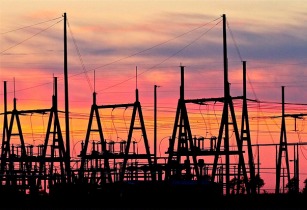In line with the initiatives to boost energy economy across the Middle East, the UAE and Kuwait have announced ambitious capacity targets for 2022 to invest more than US$220bn to develop the countries? energy sector
In November 2017, the UAE announced plans to invest US$109bn in the sector until 2022. Kuwait also announced similar plans to invest US$112bn in the next five years to boost production in hope of increasing oil capacity from 3.2 mmbbl per day to around four mmbbl per day by 2020.
Following the Arab spring that began in December 2010, supply in several MENA countries was severely disrupted, and coupled with Iranian sanctions, led to substantial losses from the region that contributed to a rise in oil prices. In Syria and Yemen, exports dropped to zero, whilst in Libya, output fell to as little as 220kb/d by mid-2014. High prices inevitably led to strong supply response, mainly from the US.
Recently, Arab Petroleum Investments Corporation (APICORP) has published its latest research report, focussing on the performance of the different countries in the MENA region?s oil supply, in the context of regional geopolitics.
The report notes the effect of a number of geopolitical issues leading up to the Q2 2014, when crude supply began to overtake total demand resulting in an imbalance that reached 1.5 mmbbl per day in 2015. This imbalance continued well into 2016 and 2017, resulting in record levels of stock build.
As the Organisation for Economic Co-operation and Development?s (OECD) commercial stocks increased in July 2016, this caused prices to plunge and new measures to be implemented by OPEC to rebalance the market, while different oil-based economy countries from across the region looked to invest more heavily in energy sources to overcome the oversupply.
At the forefront of these, investors have been more cautious. In the case of Libya, the improving production profile is not backed by a strong historical trend, having had an inconsistent production profile due to regular production outages caused by different factors including civil unrest and geopolitical tensions.
The report also finds that Iraq managed to continue increasing production even whilst battling so-called Islamic State, while Iranian output recovered following the lifting of sanctions. Earlier this year, Iraq announced a revised capacity target with the aim of reaching 6.5 mmbbl per day by 2022.
For Iran, during the brief period when the US sanctions were lifted, the country managed to increase output from 2.9 mmbbl per day in 2015 to 3.8 mmbbl per day today.
Mustafa Ansari, senior economist, added, ?It has become apparent that the market is increasingly affected by a broader range of factors, and that the US shale industry cannot rebalance the market alone. As demand growth continues to outpace supply, we could see further stock withdrawals. And with OPEC spare capacity expected to decline, especially if production cuts are eased, then the market will have a small buffer within which it can cushion itself against supply disruptions, leading to price hikes and higher volatility.?






